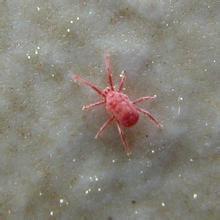Matters needing attention in planting soft jujube and kiwifruit
Soft jujube kiwifruit is a new type of fruit, its volume is smaller than kiwifruit, and there is a big difference between it and kiwifruit is that it can be eaten without peeling. Because of its curiosity and its own goose taste and nutritional value, it has spread all over the country, people from many places have joined this popular planting, but not all places are suitable for planting. So today let's take a look at the precautions for its planting.

1. Soil
The root system of soft jujube kiwifruit is not particularly developed and will not go deep into the soil layer like other fruit trees. it usually only has a shallow layer of soil, so it naturally has certain requirements for the growing soil. It is best to plant in sandy or loam soil with moderate or alkaline soil acidity. The most taboo soil is the soil with high soil viscosity and very moist soil, and other soils can also be planted. But the output will still have an impact.
2. Time
Soft jujube kiwifruit should pay attention to its planting time, usually we will plant it in February and March of spring and September and October of autumn every year. During these periods, the soil temperature is the most suitable for soft jujube kiwifruit to take root and sprout and grow branches and leaves, so the survival rate of planting soft jujube kiwifruit in this shoe time is at least 2/3 higher than that planted at other times. However, there are certain differences in climate and temperature in different regions, so you can determine the best planting time according to the specific local conditions.
3. Density
In order to facilitate the later field management and improve the yield of soft jujube kiwifruit, we need to pay attention to the distance between each row and each plant, and plant according to the reasonable planting density. usually, soft jujube kiwifruit is planted at an interval of two to three meters per plant and four to five meters per row, which can not only make full use of the land, but also maintain the light and air circulation in the field. There will be no gloomy phenomenon, which can also reduce the harm of diseases and insect pests to a certain extent.
4. Pollination
The downside of soft jujube kiwifruit is that it is not androgynous. If there is no reasonable planting of seedlings, it is very likely that the whole field will not bear fruit. So when planting, we usually plant according to the proportion of one male for every eight female seedlings, so as to ensure the success rate of pollination of soft jujube kiwifruit.
5. Set up a frame
After the saplings are strong to a certain height, they need to build a support to let them grow along the support, so that even if there are more fruits, there will not be the phenomenon that the branches are broken and cannot bear the weight of the fruit. In general, a bracket is built under each seedling, and then each support is connected with wire or rope, which is not only convenient for picking in the later stage, but also ensures the fruit rate of soft jujube kiwifruit.
6. Weeding
Soft jujube kiwifruit it also has a very unique place, many fruit trees can use herbicides to control weeds, so simple, convenient and thorough, but soft jujube kiwifruit can not be sprayed with water, any potion will affect the survival of soft jujube kiwifruit seedlings, so we can only use ploughing and manual weeding for its weeding management.
- Prev

How to increase the yield of sugarcane
How to increase the yield of sugarcane
- Next

Control of Castanea mollissima Red Spider
The Chinese chestnut red spider is called the needle leaf small claw mite, harms the Chinese chestnut leaf, causes the leaf to fade into the yellow and white small spot, serious leaf scorch turns brown, causes the reduction in yield. The winter eggs overwintered on the leaf scars, coarse bark crevices and branches on the back of 1-4-year-old branches, and began to hatch from late April to early May the following year, when the chestnut buds were sprouting.
Related
- Moge, come on! The staff of the peasant association in the producing area of cantaloupe were frightened when the crowd gathered.
- Causes and Solutions of low Fruit setting rate of Apple
- Symptoms and control measures of passion fruit virus disease
- Fruit growing lesson: how do apple orchards keep high yields?
- Can you build orchards in the mountains? What are the pros and cons?
- How to manage the coloring period of Crisson grape?
- This paper introduces the processing technology of two kinds of fig products.
- How much is a month for retired teachers in rural areas by 2020?
- How can strawberry planting increase sugar content? We should pay attention to management in many aspects.
- What are the cultivation techniques on how to improve the yield of golden fruit?

